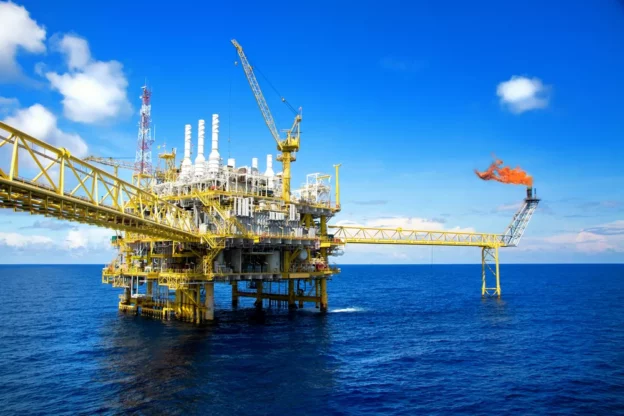The Norwegian Petroleum Directorate has reported that Harbour Energy, in collaboration with its partners Sval and Aker BP, has made a significant offshore gas discovery, specifically in well 15/9-25, located in the North Sea. This discovery adds to the results obtained from two previous exploration wells.
Located northeast of the Sleipner area, about 210 km west of Stavanger, the field is estimated to contain between 1 and 3 billion standard m3 of recoverable oil equivalent.
The 15/9-25 well, which marks the first drilling in production license 1138 awarded during the 2021 Predefined Area Awards (PAA), reached a measured depth of 2,872 meters below sea level, using the Noble Integrator rig.
The main objective of the exploration in this well was to confirm the presence of hydrocarbons in the Middle Jurassic and Triassic reservoir rocks, specifically in the Hugin and Skagerrak formations.
In addition, the aim was to delineate the gas already discovered in wells 16/7-2 and 16/7-10, located in the Paleocene Ty Formation.
Analysis of the well revealed a 22-meter-thick sand aquifer layer of excellent reservoir quality in the Hugin Formation and a 10-meter gas column in a 118-meter-thick sandstone reservoir, also of excellent quality, in the Ty Formation.
Harbour Energy and its partners are currently evaluating the technical and economic feasibility of connecting this new discovery to existing infrastructure in the vicinity.
The moment of offshore gas discovery
The gas-water contact was detected at 2,330 meters below sea level, in line with previous discoveries. Although the 15/9-25 well did not undergo formation testing, extensive data acquisition and sampling were performed.
Harbour Energy recently signed a five-year master service agreement with EthosEnergy, appointing them as the primary provider of maintenance and support services for Harbour Energy’s light industrial gas turbines at three production assets in the UK North Sea sector.
This gas discovery not only reinforces Norway’s position as a leader in North Sea energy exploration, but also underscores the importance of collaboration between companies to maximize the potential of natural resources. As the world seeks to diversify its energy sources, findings like this play a crucial role in balancing energy demand and environmental sustainability.
Don’t miss any of our posts and follow us on social media!
Inspenet.com YouTube LinkedIn Facebook Instagram
Source: offshore-technology.com
Photos: shutterstock

